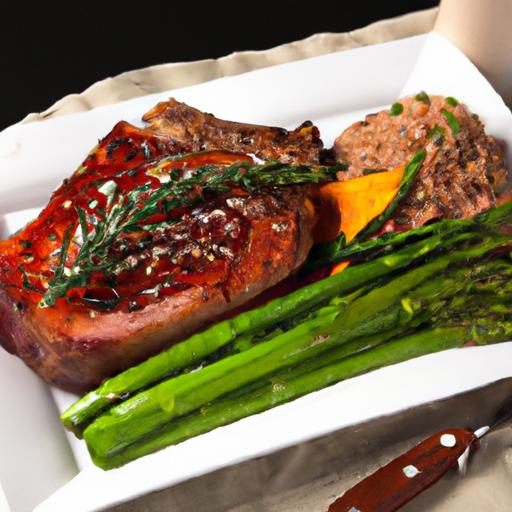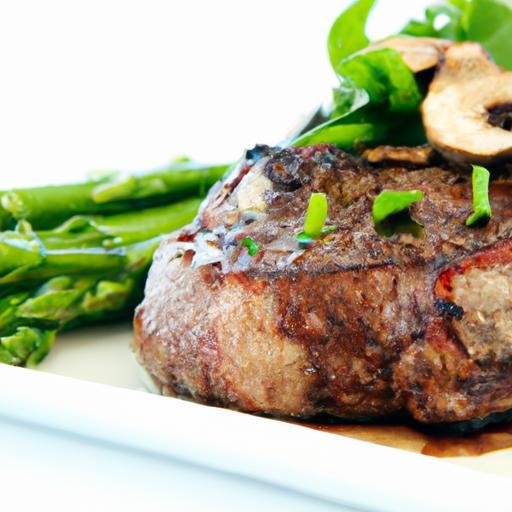There’s an age-old debate sizzling in kitchens and steakhouses alike: how many times should you flip a steak on the grill? Some swear by the classic single flip, while others advocate for the perpetual back-and-forth dance of the spatula. But beyond tradition and personal preference lies a fascinating interplay of science, technique, and timing that can turn an ordinary piece of meat into a mouthwatering masterpiece. In this article, we’ll dive deep into the art and science of steak flipping, uncovering how many times you really should flip to master that perfect sear, juicy interior, and savory crust. Ready to up your grilling game? Let’s flip the script on steak cooking once and for all.
Mastering the Flip: How Many Times Can You Flip a Steak? unlocks the fascinating science behind steak flipping and reveals how precision in timing and temperature changes the very essence of flavor. Understanding these principles elevates your cooking game, turning a simple steak into a culinary masterpiece brimming with juiciness, texture, and mouthwatering char.
Prep and Cook Time
- Preparation: 10 minutes
- Cooking: 8-12 minutes (depending on thickness and desired doneness)
- Total: 20 minutes
Yield
Serves 2 hearty portions
Difficulty Level
Medium – perfect for home cooks ready to elevate their steak skills beyond the basics
Ingredients
- 2 boneless ribeye steaks, 1½ inches thick, well-marbled
- 1 teaspoon kosher salt
- 1 teaspoon freshly ground black pepper
- 2 tablespoons high smoke point oil (grapeseed or avocado oil preferred)
- 2 tablespoons unsalted butter
- 3 garlic cloves, gently crushed
- 2 sprigs fresh thyme or rosemary
- Optional: finishing sea salt and cracked black pepper
Instructions
- Bring steaks to room temperature for at least 30 minutes; this ensures even cooking and facilitates perfect temperature control during flips.
- Season generously with kosher salt and black pepper on both sides just before cooking to enhance the crust formation.
- Heat a heavy-bottomed cast iron skillet over medium-high heat until shimmering but not smoking to guarantee the ideal sear.
- Pour in oil and swirl to create a thin, even layer. Immediately place steaks in the pan away from you to avoid splatters.
- Sear the first side without moving for 2 minutes, then flip the steak using tongs or a thin spatula-flip frequently every 30 seconds thereafter to evenly develop a crust and prevent burning.
- Add butter, garlic, and herbs when the second side is on the skillet; spoon the melted butter continuously over the steaks to infuse rich flavor.
- Continue flipping every 30 seconds for 6-8 minutes total, depending on thickness and preferred doneness. Use an instant-read thermometer: 130°F for medium-rare.
- Remove steak from heat and tent loosely with foil for 5 minutes to allow juices to redistribute for maximum tenderness and juiciness.
- Serve immediately, finishing with a pinch of sea salt and cracked pepper to enhance nuanced flavors developed during the multiple flips.
Chef’s Notes: Tips for Success
- Choosing the Right Cut: Ribeye and strip steaks with good marbling withstand multiple flips without drying out. Thinner cuts may lose juiciness if flipped too often.
- Mastering Temperature Control: Medium-high heat is crucial. Too hot, and the butter burns; too low, and you’ll miss the Maillard reaction responsible for flavor complexity.
- Tools Matter: A pair of sturdy kitchen tongs and a wide, thin spatula allow for effortless flipping without piercing the meat, preserving juices.
- Flip Frequency: Contrary to old wisdom, flipping a steak multiple times creates a more even crust and cooks faster. Aim for every 30 seconds after initial sear.
- Make-Ahead: Let steaks sit at room temperature 30 minutes before cooking for even heat distribution inside.
Serving Suggestions
Present these flawlessly flipped steaks on rustic wooden boards or warmed plates, garnished with fresh thyme sprigs and a dollop of garlic herb butter. Pair with roasted seasonal vegetables, crispy garlic mashed potatoes, or a vibrant chimichurri sauce to complement the steak’s deep, caramelized flavors. A bold red wine like Cabernet Sauvignon or Malbec will elevate the experience further.
| Nutritional Information (per serving) | Amount |
|---|---|
| Calories | 520 kcal |
| Protein | 45 g |
| Carbohydrates | 1 g |
| Fat | 38 g |
For a deep dive into steak cooking techniques, check our Ultimate Guide to Steak Cooking. For scientific insights on meat chemistry, Science of Cooking is an excellent resource.

Q&A
Q: Why does the number of times you flip a steak matter?
A: Think of flipping as the steak’s dance – each turn redistributes heat, controls crust formation, and keeps juices locked in. Too few flips can mean overcooked spots; too many, and the meat doesn’t get that perfect sear. Mastering the flip ensures a juicy, evenly cooked masterpiece.
Q: Is there a magic number of flips for the perfect steak?
A: While many swear by the classic “flip once” approach, science and chefs agree that flipping multiple times-sometimes every 30 seconds-can cook the steak more evenly and faster, reducing overcooked edges and dry interiors. So, there’s no one-size-fits-all number; it’s about knowing your heat and your cut.
Q: How does flipping affect the crust and juiciness?
A: The crust forms when the steak first hits the pan or grill – that Maillard reaction magic. Flipping too soon or too often can disrupt this process, but timely flips help build multiple thin crust layers, enhancing flavor. Flipping also lets juices redistribute rather than pool on one side, keeping the meat succulent.
Q: Can flipping too many times be a bad thing?
A: Yes and no. Excessive flipping can cause heat loss due to constant lifting and turning, slowing down cooking. But moderate frequent flipping, done right, can actually speed up cooking and improve evenness. The key is controlled, intentional flips-not frantic flipping frenzy!
Q: What’s the best technique to master the flip?
A: Use tongs, not a fork – piercing the steak releases juices. Lift gently, turn confidently, and don’t press down (that squeezes out moisture). Watch the steak’s color and edges; when they show that perfect golden-brown, it’s flip time. Practice turns perfect!
Q: Does steak thickness change how often I should flip?
A: Absolutely! Thicker steaks benefit from more frequent flipping to ensure the heat penetrates evenly, preventing a burned crust and raw center. Thin cuts can get by with fewer flips since heat passes through rapidly.
Q: Can flipping techniques differ between grill, pan, or oven cooking?
A: Yes! On a grill, open flames and higher heat mean quick searing and sometimes less flipping. Pan-searing affords more control and encourages frequent flipping. Oven finishing usually requires no flips, as heat surrounds the steak. Knowing your cooking environment helps determine your flipping rhythm.
Q: What’s the takeaway for steak lovers mastering the flip?
A: Flipping is an art and a science-more than just a simple turn. Experiment with frequency, watch your steak’s behavior, and adapt to your tools. Master the flip, and you unlock the door to juicy, flavorful perfection every time.
The Conclusion
In the grand theater of steak sizzling, the art of flipping is more than just a simple turn-it’s a delicate dance between heat, timing, and technique. While popular lore might champion the single flip for that perfect crust, mastering the flip reveals that steaks can be flipped multiple times without sacrificing juiciness or flavor. Ultimately, how many times you flip depends on your grill, your cut, and your personal palate. So next time you stand over the fire, remember: the secret to steak perfection isn’t just in the flip itself, but in understanding the rhythm of the sear. Embrace the flip, experiment boldly, and may every steak you cook be a masterpiece, turned just the right number of times.


